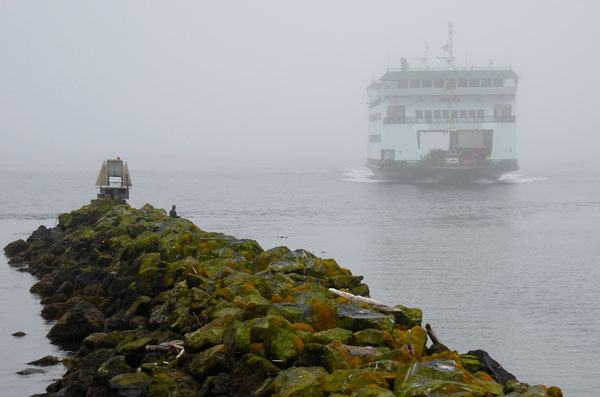The signature list of the state’s new 64-car ferries was corrected on the MV Salish with 80 tons of ballast recently.
The other two boats in the class are expected to receive the same improvement later this summer.
Also, the state Department of Transporation, Ferries Division, has created a vessel improvement team that will begin meeting quarterly next week in an ongoing effort to tackle issues with the new boats.
Both measures got the green light at a meeting late last month, involving vessel operators, senior-level agency management, and state two state lawmakers, Rep. Larry Seaquist, D-Gig Harbor and Rep. Norma Smith, R-Clinton.
One of 15 legislators who were dogging ferry leaders over design and cost issues with the Kwa-di Tabil class ferries since 2012, Smith called the meeting both “productive” and “respectful.”
“It was such an encouragement to be part of something that will make a difference — and this will make a difference,” Smith said.
The meeting was also unusual as senior agency officials don’t often meet with vessel operators.
David Moseley, assistant chief of Ferries Division, said he suggested the idea as a means of getting the “experts” — designers and operators — together to address some of the issues surrounding the vessels.
He added he also considers the meeting a success.
“I think we laid a good foundation for moving forward,” Moseley said.
In February, the agency announced that it would be adding ballast to all three vessels at once. The modifications would cost about $300,000 to complete.
The extra weight would offset a designed list of about two degrees.
Although ferry officials have maintained the ferry lists go away once the vessels are loaded with cars, the characteristic proved unpopular following the 2010 launching of the first vessel in the class, the $83.6 million MV Chetzemoka.
According to Moseley, fixing the ferries’ lists would not only address the aesthetic issue, it may also improve handling by causing the vessel to sit lower in the water.
“It might even save a little fuel because it will be more efficient,” Moseley said.
The plan to address the lists on all three boats at once was postponed, largely out of lawmaker concern, Moseley said.
It was decided during the April meeting to see if the benefits of adding ballast to one vessel would really pencil out before making the investment on the remaining two.
Moseley said he is confident the improvements will be worthwhile, and that the ballast will be added to the MV Kennewick and MV Chetzemoka at the end of the summer.
The new ferries have other problems as well, however, and the job of the improvement team is to identify and come up with solutions for the bugs.
Some of the issues that may be discussed include propellor characteristics and protocols that will lead to fuel savings, elevator performance and a “mystery” vibration problem.
South Whidbey resident Dave Hoogerwerf, chairman of the Clinton Ferry Advisory Committee and co-chair of the state Ferry Advisory Committee, was at last month’s meeting. He said the issue was initially discounted as nothing more than rumor.
Later in the meeting, a mate said the issue is in fact real and occurs at random.
Hoogerwerf said the vibration is so “radical” that it may be causing metal fatigue in railings.
“Everybody had a sneaking suspicion that (the vibration) was real but it had been discounted until that came up,” Hoogerwerf said.
“It’s worthwhile having meetings like this,” he said.
Moseley said it’s hard to track down a problem that occurs at random so a log is being created that will provide more details about when it happens, where and for how long.
Moseley said new boats always have bugs and the improvement team will meet as long as is needed.
It’s a great idea and is one he expects to implement again for the 144-car Olympic-class ferries when the first goes into service in 2014, he said.
Four are planned but, so far, funding has only been secured for two.



